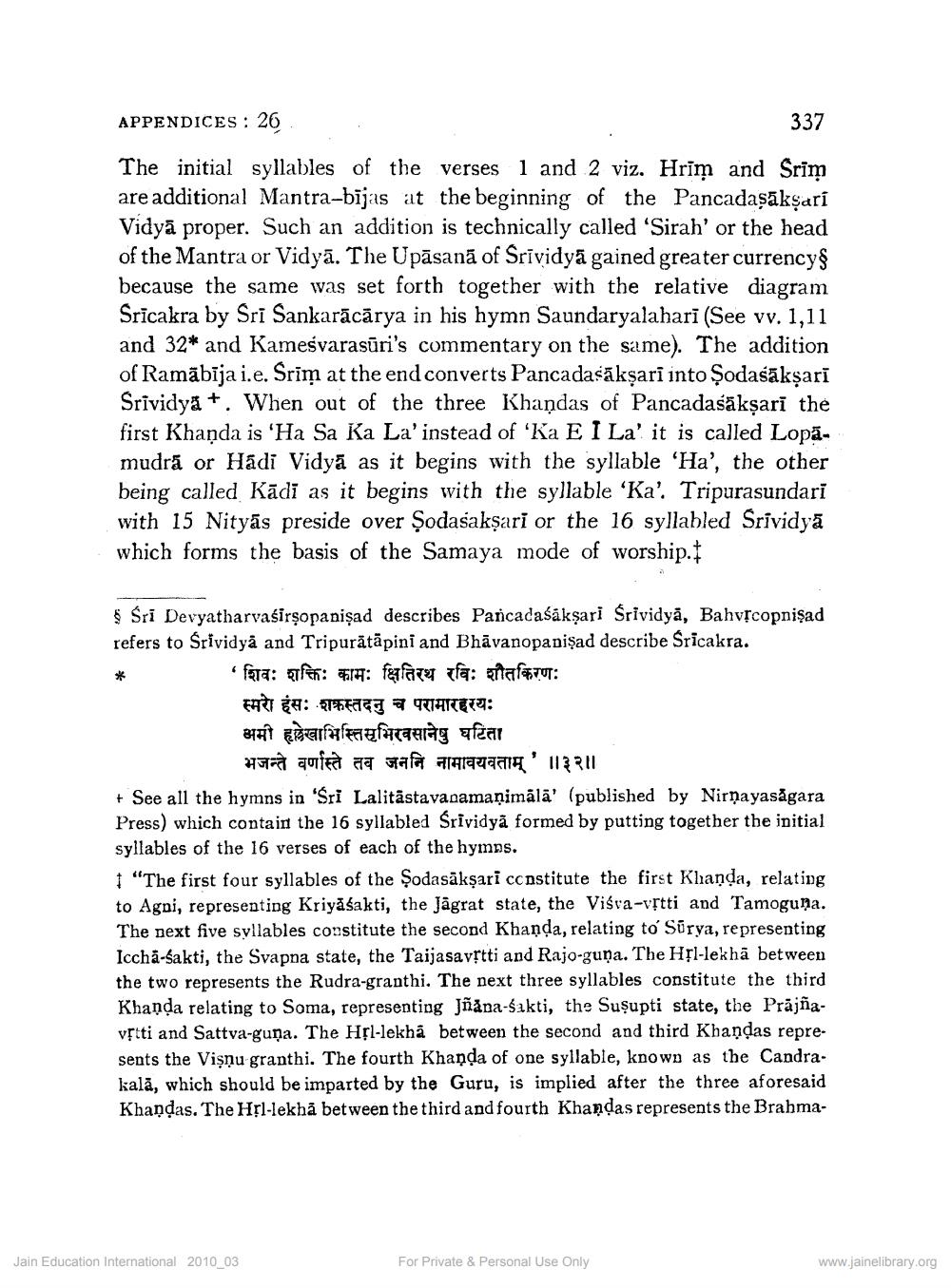________________
APPENDICES: 26
337
The initial syllables of the verses 1 and 2 viz. Hrīm and Srim are additional Mantra-bijas at the beginning of the Pancadaşāksari Vidyā proper. Such an addition is technically called 'Sirah' or the head of the Mantra or Vidyā. The Upāsanā of Srividyā gained greater currency because the same was set forth together with the relative diagram Sricakra by Sri Sankarācārya in his hymn Saundaryalahari (See vv. 1,11 and 32* and Kamesvarasūri's commentary on the same). The addition of Ramābīja i.e. Srīm at the end converts Pancadasākşarī into Sodasākşarī Srividya +. When out of the three Khandas of Pancadasākşarī the first Khanda is 'Ha Sa Ka La'instead of 'Ka E I La' it is called Lopā. mudrā or Hadi Vidyā as it begins with the syllable 'Ha', the other being called Kādī as it begins with the syllable 'Ka'. Tripurasundari with 15 Nityās preside over Sodasakşari or the 16 syllabled Srividyā which forms the basis of the Samaya mode of worship. I
$ Śri Devyatharvasirşopanişad describes Pancadaśákşari Srividyā, Bahvịcopnişad refers to Srividya and Tripurātäpini and Bhāvanopadişad describe Sricakra.
fara: fen: FA: falary pa: tarat: स्मरो हंसः शक्रस्तदनु च परामारहरयः अमी हल्लेखाभिस्तिसृभिरवसानेषु घटिता
भजन्ते वर्णास्ते तव जननि नामावयवताम् ' ॥३२॥ + See all the hymns in Sri Lalitāstavacamaņimāla' (published by Nirnayasagara Press) which contain the 16 syllabled Srividyå formed by putting together the initial syllables of the 16 verses of each of the hymns.
"The first four syllables of the Sodasākşari constitute the first Khanda, relating to Agni, representing Kriyāśakti, the Jāgrat state, the Visva-vitti and Tamoguņa. The next five syllables constitute the second Khanda, relating to Sürya, representing Iccha-Sakti, the Swapna state, the Taijasavștti and Rajo-guņa. The Hţi-lekhā between the two represents the Rudra-granthi. The next three syllables constitute the third Khanda relating to Soma, representing Jñana-Śakti, the Sușupti state, the Prājñavịtti and Sattva-guna. The Hộl-lekhá between the second and third Khandas represents the Vişņu granthi. The fourth Khanda of one syllable, known as the Candra. kalā, which should be imparted by the Guru, is implied after the three aforesaid Khandas. The HỊl-lekhā between the third and fourth Khandas represents the Brahma
Jain Education International 2010_03
For Private & Personal Use Only
www.jainelibrary.org




